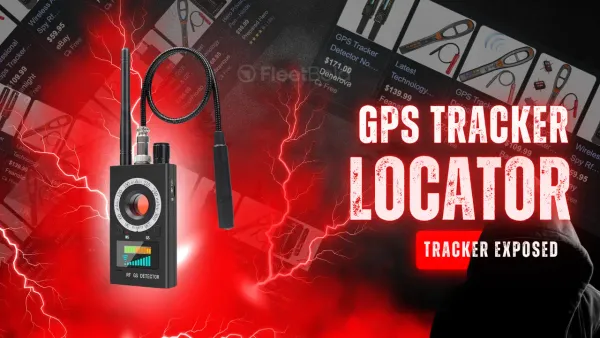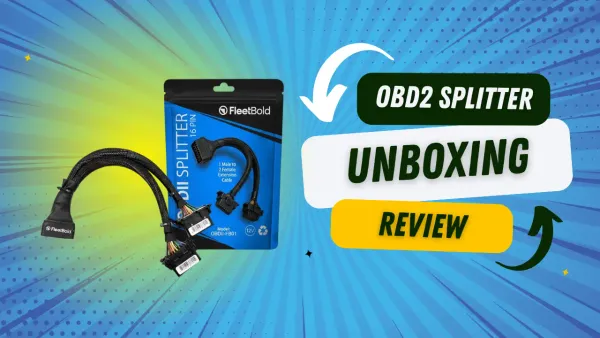Your Roadmap to a Thriving Car-Sharing Venture

Introduction
Car-sharing is becoming an increasingly popular way for enterprising individuals to turn a parked car into a revenue stream. If you have ever wondered how to run a profitable car-sharing business—whether you call it a peer-to-peer rental, a car-sharing platform, or something else—this guide is your comprehensive roadmap to success. We will walk through choosing the right vehicles, structuring finances, streamlining bookings, and offering stellar customer service. We will also dive into some frequently overlooked items that can make or break your enterprise, such as an ozone generator to eliminate funky smells and a good vacuum for those last-minute clean-ups.
In this extensive article, we will explore the nuts and bolts of setting up a car-sharing business, discuss how to reduce your financial exposure, highlight some best practices for vehicle maintenance, and outline an “exit strategy” for selling cars before expensive wear and tear has had a chance to chew into your profits. Grab your favorite beverage, settle in, and let’s talk about how to run this show like a professional—while keeping our sense of humor intact.
Table of Contents
- Understanding the Car-Sharing Business Model
- Choosing the Right Vehicle
- Financing vs. Cash-Owned: Which is Best?
- Developing an Exit Strategy
- Essential Tools and Starter Kit
- Managing Bookings and Guest Expectations
- Maintenance, Cleanliness, and Turnaround
- Building a Strong Business Structure
- Marketing and Standing Out
- Frequently Asked Questions
- Conclusions
1. Understanding the Car-Sharing Business Model
The car-sharing concept, famously popularized on various peer-to-peer platforms, competes with traditional rental car agencies. Whether you operate from your phone or from a workplace location, your main job is to maintain a fleet of well-functioning, appealing vehicles for short- or long-term rentals. According to Turo’s official website (https://turo.com/), thousands of people are using peer-to-peer car-sharing to earn extra income, supplement existing businesses, or build new ventures from scratch.
Here’s a quick example scenario: suppose you have a spare car or a vehicle that you do not use daily. Instead of letting it depreciate in your driveway, you list it on a sharing platform. Every time someone rents it for a day or a week, you collect a rental fee, often making hundreds of dollars a month after expenses if you price it correctly.
While the process sounds straightforward, success hinges on multiple factors like location, your willingness to keep the vehicle in top shape, and your attention to detail. This guide will help you navigate those specifics.
The Profit Potential
Depending on your location and the type of car you list, profits can vary from a few hundred dollars a month to more than a thousand. Economy cars, for instance, are cost-effective to purchase and maintain, and they tend to be in demand with budget-conscious renters. Luxury cars, meanwhile, can earn more per day but also cost more to acquire and to maintain. The best approach is often to start with a modest vehicle you already own or a relatively cheap used car, refine your processes, and scale up once you are confident in your systems.
The comedic aspect? Let’s just say it’s not always sunshine and crisp-dollar bills. You might find yourself wrestling with a pineapple-scented car freshener your renter stealthily left behind. Or maybe you will spend half your day politely explaining to a guest that, no, all four tires are not supposed to look like racing slicks at the end of a single rental. The upside is that the more you plan, the less frequently you will deal with these random issues.
2. Choosing the Right Vehicle
One of the biggest decisions in a car-sharing business revolves around vehicle selection. Not every car is a prime candidate for rentals. Some are more prone to mechanical headaches, while others depreciate so quickly that your theoretical profit margins vanish like a magic trick.
Criteria for Listing
- Age and Mileage: Certain peer-to-peer platforms require vehicles to meet specific standards. For instance, some platforms only allow cars up to 12 years old and with fewer than 130,000 miles. Always double-check the latest eligibility requirements before listing.
- Condition: Your vehicle should be in good mechanical shape. Renters expect a glitch-free experience, and one breakdown can sink your ratings—and your future booking potential.
- Popularity: Cars that are popular in your locale—fuel-efficient sedans, crossovers, or even all-wheel-drive models in snowy regions—tend to garner the most consistent bookings.
Vehicle Depreciation
Depreciation is the monster under the bed for every serious car-sharing entrepreneur. The moment you list your car, it begins accumulating rental-related mileage at a far more rapid pace than standard personal use. According to Kelley Blue Book (https://www.kbb.com/), a vehicle typically loses around 20% of its value in the first year of ownership, though this can vary by brand and mileage.
Many hosts underestimate how quickly the value of a car can drop when used heavily. If the difference in the vehicle’s worth by the time you sell it is greater than the total net profit you made during the rental period, you effectively operated at a loss even if you thought you were making money on each rental. That is why having a well-researched exit strategy is crucial.
Economy vs. Prestige
The debate between buying a basic subcompact or a decked-out luxury coupe is an interesting one. Luxury cars can command far higher daily rates, but they also tend to come with bigger monthly payments (if financed), higher insurance premiums, and greater risk in terms of upkeep. Economical cars might not fetch top-dollar rental prices, but they are frequently booked, cheap to maintain, and easy to turn around in just a few hours. Ultimately, the best choice comes down to what you can afford comfortably, how soon you want to recoup your investment, and the clientele in your region.
Buying vs. Using a Car You Already Own
- Using a Car You Already Own: If you meet the platform’s requirements, this is the fastest way to start earning without incurring extra costs. It allows you to ‘test the waters’ of car-sharing with minimal risk.
- Buying a New or Used Car: If you go this route, pick cars in the price range of about eight to fifteen thousand dollars. This strategy offers a manageable up-front cost and keeps depreciation within reason, so you have wiggle room to make a profit before the car’s value drops too drastically.
3. Financing vs. Cash-Owned: Which is Best?
Financing a car is a seductive option, often allowing you to acquire a shinier, newer vehicle with lower up-front costs. But as you might guess, it is not always a bed of roses. Financing typically spans five, six, seven, or even eight years, whereas a heavily rented car might degrade more rapidly. If you do not make significant payments against the principal, you can accumulate negative equity. That is, the car becomes worth less than what you owe.
Do you want to pick up the tab for that difference when it comes time to sell or if insurance declares the car a total loss after an accident? Probably not. That’s why many experienced hosts are fans of the cheap “cash car” approach: purchasing the entire car up-front and avoiding monthly payments—and the interest that comes with them.
The 50-50 Model
In some business strategies, a 50-50 approach is recommended: half your fleet paid for in cash, and half financed under your company’s name. Why? The cash-owned vehicles offset the monthly payment obligations on the financed ones, allowing you to funnel revenue into paying them off quickly—ideally within three to six months. This approach reduces risk and negative equity while scaling your operation. By working with a balanced fleet, you mitigate the chance of unsustainable debt building up.
If you are starting from square one without a car, you could decide to finance a modest ten-thousand-dollar vehicle. Your priority should be paying it off as soon as possible—within about one year. After that, you can reinvest earnings and offset the costs of acquiring additional vehicles. Once you have mastered this balancing act, controlling your exit strategy becomes easier.
4. Developing an Exit Strategy
In the immortal words of many business gurus, “Begin with the end in mind.” The car-sharing industry is no different. You are not just collecting rent checks; you are also babysitting a depreciating asset that needs to be sold before it breaks down or becomes worthless. So how do you craft a good exit strategy?
Define a Timeline
One method is to determine the approximate time you plan to keep each vehicle, often somewhere between eight and eighteen months. You want to run it for enough rentals to recover your investment but not so long that mileage or mechanical issues drastically lower its resale value.
Monitor Depreciation
Keep a pulse on the market value of your car. Look up updated valuations every few months. If you see the car’s worth falling too quickly or you notice a major mechanical need looming on the horizon (like a failing transmission), it may be time to sell or trade in.
Trade-In for Continuous Upgrades
Another tactic is to trade your car for something similar but with fewer miles. By continually rotating your fleet in this manner, you maintain a stable of reliable vehicles that do not sink your profits in major repairs.
Remember, if you are financing, you have less freedom to sell whenever you want, especially if you still owe more than the car is worth. That is why controlling your balance—preferably paying off your loan quickly—is so important.
5. Essential Tools and Starter Kit
Here is where the fun, gear-nerdy side of the business comes in. Sure, you can rent out a car with nothing but the key and a smile, but having a few strategic items can dramatically minimize headaches and maximize the smoothness of each rental hand-off. Also, a good set of tools shows your dedication to quality, which can reflect positively in reviews from guests.
The Ozone Generator
One of the not-so-glamorous truths about renting cars to strangers is that they might smoke, spill, or otherwise contribute an “interesting” aroma to the interior. According to some experts, an ozone generator can eliminate up to 95% of those unwanted smells, typically in under an hour. Simply run the machine inside a closed-up vehicle. Make sure to follow the safety instructions because ozone can be harmful in large quantities. If you have a short window between rentals and don’t want the next guest to think you are running an illicit horticulture club, the ozone generator is your friend.
The Lockbox
A lockbox is often mounted onto the car’s window or some secure spot, holding your key safely until the renter arrives. Many hosts use them for contactless check-ins and check-outs, especially if you cannot be there in person or want to offer more flexible pick-up times. Remember to invest in a lockbox of decent quality—skimping might cost you more in frustrated guests or a stolen key if the lock is easily compromised.
The Radio Frequency Blocking Pouch (Faraday Bag)
If your car uses a key fob, you might be concerned that the transmitter could inadvertently unlock the doors if stored too close. A Faraday bag blocks radio signals, so if you keep the fob inside the bag, your vehicle will not unlock or start until the fob is removed from that bag. This protects your car from unauthorized access when the key is in the lockbox. It is a small additional purchase that can save you a big headache if a passerby tries to open your doors.
GPS Trackers
Your city might be the friendliest place on Earth, but let’s face it: stuff happens. Having a GPS tracker discreetly installed can give you peace of mind for theft situations or renters who conveniently “forget” to return your car on time. There are a few types:
- OBD Port Trackers: These simply plug into the On-Board Diagnostics port beneath your dash. However, a savvy or unscrupulous person could remove them.
- Apple AirTags: More subtle, but rely on Apple’s community of devices to locate. Also, some renters might be alerted if they have an iPhone that detects a hidden AirTag traveling with them.
- Magnetic Trackers: These can be placed discreetly anywhere on the metal frame of the car. Just remember you will need to charge the internal battery periodically.
- Hardwired Systems: More expensive to install, but can give you remote access to lock or unlock the vehicle and even a kill switch for extra security.
Tire Tread Gauge
It costs a few dollars and takes seconds to use, so there is no excuse for overlooking your tire health. Some renters might drive aggressively, burn rubber, or—if they are exceptionally brazen—swap your good tires with their worn ones. Documenting tread depth before each trip can protect you from liability or surprise tire expenses that you never saw coming.
Vacuum and Microfiber Cloths
A vacuum is indispensable for quick turnarounds, especially if you wash your cars at home. Many hosts keep both a heavy-duty shop vacuum for deep cleans and a handheld or portable unit for light once-overs between back-to-back bookings. At the same time, microfiber cloths are essential for wiping down dash surfaces, windows, and general interior cleaning. They are cheap, effective, and help you maintain that “like-new” look, which guests appreciate.
Business-Friendly Receipts
While not exactly a 'tool,' keep track of all purchase receipts for these items. According to the IRS official website (https://www.irs.gov/), legitimate expenses used entirely for your business operations may be tax-deductible. Keep digital copies for easy filing. This can help reduce your taxable profit and, in turn, save you money.
6. Managing Bookings and Guest Expectations
Getting a booking is exciting—someone out there sees your listing, likes your price and model, and decides to rent from you. But that is only the beginning:
Setting Accurate Daily Rates
Begin by researching similar vehicles in your region. Pricing too high discourages bookings unless your car has a unique ‘wow’ factor. Pricing too low is a race to the bottom. Start in the mid-range, then adjust based on the response your listing receives. Over time, watch out for local events or seasonal demand that may allow you to raise rates temporarily and capitalize on demand. The comedic side effect here tends to be “weekend millionaires” who assume you will be so grateful to have a booking that you let them pay peanuts. Politely hold your ground and trust your research.
Effective Communication
When a guest books, be prompt and helpful in your messages. Provide clear instructions for pick-up and drop-off, including how to use the lockbox. If you require them to fill the gas tank or return the car in a certain condition, be explicit in a polite but firm manner. Ambiguity leads to misunderstandings. That said, do not spam them with 25 messages before they ever get in your car. Aim for clarity over verbosity.
Photographic Documentation
Always take detailed photos of your vehicle’s interior, exterior, wheels, mileage, and fuel level before and after each trip. Save these on a secure drive. Should a renter damage the car or claim it was delivered dirty, you have time-stamped photos to back up your side of the story. Digital evidence is your best friend in disputes.
7. Maintenance, Cleanliness, and Turnaround
No matter how fancy your listing description is, if the car shows up with leftover fries under the seats and suspicious crumbs everywhere, your reviews will suffer. Aim to deliver a vehicle that feels as fresh and inviting as a warm croissant on a Sunday morning.
Routine Maintenance
Schedule oil changes, brake checks, and all major services at intervals recommended by the manufacturer. Keep a log of each service to prove your diligence if you ever encounter mechanical disputes.
Quick Turnaround Tips
- Interior Cleanup: Vacuum seats and floors. Wipe down surfaces with microfiber cloths, focusing on the dashboard and center console.
- Odor Control: If time allows, use your ozone generator to neutralize lingering smells. An all-purpose fabric cleaner can also help remove small stains.
- Check All Fluids: Make a quick pass through the engine bay. Top off the windshield washer fluid if needed.
- Tire Inspection: Do a walk-around with your tire tread gauge and keep an eye out for nails or other damage that could flatten your day—literally.
Following a quick yet consistent routine ensures your car is guest-ready in the shortest time. Remember, some renters book last-minute, so you never want to be caught off-guard.
8. Building a Strong Business Structure
Treating your car rentals like a “side hustle” might work short-term, but if you plan on long-term success, get serious about business structure. Forming a Limited Liability Company (LLC) is a good starting point to separate your personal assets from business liabilities, and it can also influence how you are taxed. According to the IRS official website, sole proprietors are audited more often than LLCs, so setting up a formal business entity may lower your perceived risk to tax authorities. Of course, always speak with a professional to ensure you structure it properly.
Additionally, you might consider opening a business bank account to keep your income and expenses separate. This helps come tax time when you are trying to categorize which receipts belong to your car-sharing operation and which belong to your Sunday coffee habit. Clean books are a delight to accountants and might protect you from compliance headaches later on.
9. Marketing and Standing Out
Although many hosts rely on major car-sharing platforms to do the heavy lifting for marketing, you can stand out with a few thoughtful strategies:
- Killer Listing Photos: Invest in decent photography. Show multiple angles of your car, a clean interior, and highlight unique features like sunroofs or premium sound systems.
- Detailed Descriptions: Mention the condition of your vehicle, your maintenance schedule, and any freebies you throw in, like phone chargers or an umbrella in the trunk. People love small extras.
- Flexible Pick-Up/Drop-Off Options: The easier it is for a guest to start their rental, the more likely they are to choose your listing over a competitor.
While you cannot always control your distance from major airports or busy urban centers, you can control the experience you deliver. That is the heart of successful marketing in any service-based business.
10. Frequently Asked Questions
Below are some commonly asked questions about starting and running a car-sharing business, along with practical and concise answers.
Q1: What kind of car is best for a first-time host?
A1: Look for a dependable, fuel-efficient sedan or compact model. These cars typically cost less to buy, maintain, and insure. They also appeal to a wide range of renters who value affordability.
Q2: How many pictures should I take before each trip?
A2: Aim for at least 15-20 photos covering all angles, including the tires, odometer, fuel gauge, and close-ups of any existing damage. Detailed documentation can save you from disputes down the line.
Q3: Is it better to meet renters in person or use a lockbox?
A3: Both methods can work. A lockbox is convenient for remote or contactless pick-up. However, some hosts prefer meeting guests face to face to build rapport and ensure the car’s condition is verified on the spot.
Q4: Do I really need an ozone generator?
A4: If you ever have a renter who smokes or leaves an odor behind, an ozone generator is extremely handy. It can remove smells more thoroughly than sprays or air fresheners, especially if you have a short turnover time between renters.
Q5: How do I handle insurance?
A5: Many car-sharing platforms provide some level of insurance. However, you should also speak with an insurance professional to confirm you have coverage for any contingency. Policies differ by region, so there is no one-size-fits-all answer.
Q6: Should I create a separate LLC for every car?
A6: Having a single LLC for your business operations is usually sufficient, especially when starting out. Multiple LLCs might complicate your bookkeeping and taxes without providing significantly more protection.
Q7: How soon can I scale my car-sharing business?
A7: Scale only after you have a reliable system for cleaning, servicing, documenting, and marketing. Many people find they can handle one to three cars easily, but once you surpass that, you should plan carefully so you do not overextend yourself.
Q8: What if a renter damages my car?
A8: Document everything and file a claim with the platform or your insurer right away. Your photos and maintenance logs will help expedite the process, and you can hopefully receive compensation for repairs.
11. Conclusions
Launching a successful car-sharing business is not rocket science, but it does require strategic thinking, consistent maintenance, and a willingness to adapt as you learn. By focusing on careful vehicle selection, balanced financing methods, and rigorous exit planning, you can earn a tidy profit while avoiding some of the pitfalls that plague inexperienced hosts.
Remember to outfit your operation with crucial items like lockboxes, GPS trackers, and an ozone generator so that each rental is as seamless as possible. Document thoroughly, offer excellent communication, and keep your vehicles fresh and reliable. These are the cornerstones of customer satisfaction—and repeated bookings.
If you commit to treating this venture like a real business, your small fleet of cars can transform into a steady—and sometimes surprisingly lucrative—income stream. Just don’t forget to vacuum the floor mats before your next guest arrives.





